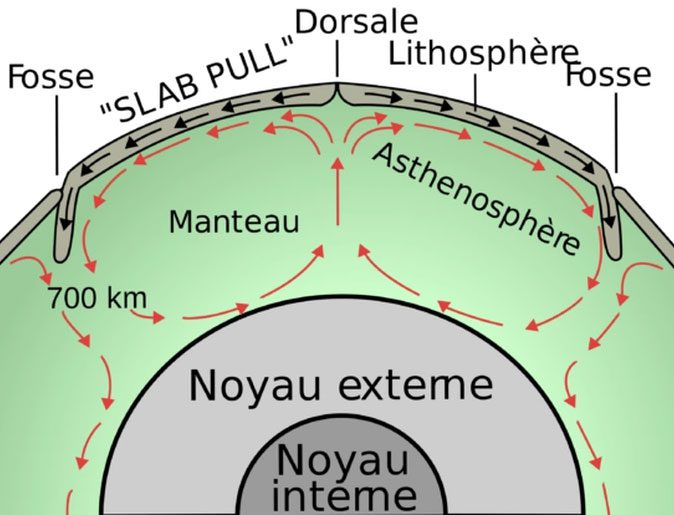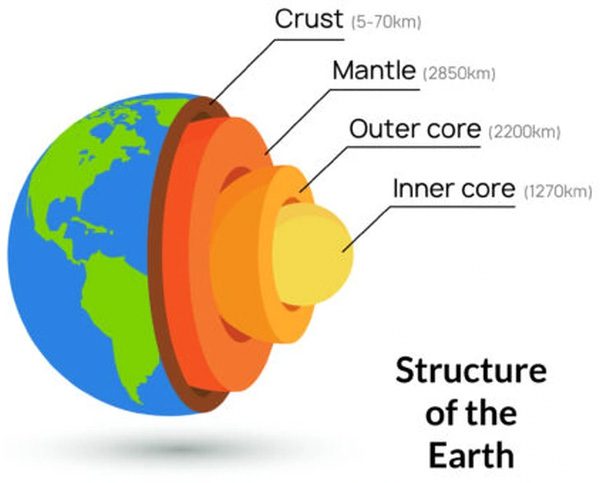One day, all the heat on the planet will be lost due to a mineral called Bridgmanite.
The Earth is gradually cooling down. Since the formation of the Solar System and our planet about 4.5 billion years ago, the Earth has been depleting its heat reserves and losing heat at a faster rate.
Why is the Earth Cooling?

The Earth is getting colder. (Photo: Science et Vie).
Our planet has released a significant amount of heat from its core to its surface since its formation. This has helped drive the convection of the Earth’s mantle and some geological activities.
This heat transfer process occurs between the core and the mantle (where the molten core directly contacts the solid-state minerals in the mantle).
Additionally, beneath the Earth’s crust lies a type of “soup” of very hot semi-solid magma. These have such high temperatures due to the decay of light radioactive rocks in the Earth’s mantle, which generates heat.
Once heated, magma rises to the surface (just below the Earth’s crust), releasing heat through volcanic activity. At the surface, lava cools down, becomes denser, and then sinks into the depths of the mantle.
It is here that magma is reheated, and this process repeats itself in a perpetual circular motion that has been occurring since the Earth formed 4.5 billion years ago, known as mantle convection.
This endless movement of magma has caused tectonic plates (the outer layer of the Earth divided into several parts forming plates) to shift, which is why we consider the Earth as an “active” planet.
However, scientists indicate that one day, all the heat on the planet will be lost, and it is unclear how long this convection phenomenon will last.
Recently, a group of researchers has presented a new factor: the Earth may freeze sooner than expected.

Mantle convection diagram. The red arrows indicate the movement of magma beneath the Earth’s crust. (Photo: Creative Commons).
A Heat-Conducting Mineral Making the Earth Cool Faster
First, to understand how heat is dissipated, we need to grasp how it is transferred from the Earth’s core to the mantle.
To achieve this, experts have studied the thermal conductivity of a mineral called Bridgmanite (the most abundant mineral on Earth located beneath the mantle). These minerals form part of the solid mantle that directly contacts the molten core.

Illustration of the Earth’s internal structure, from inside out: inner core, outer core, mantle, crust (Photo: Shutterstock).
Due to its electrical conductivity and according to the laws of physics, the better the conductivity, the more heat is transferred, resulting in our planet cooling down faster.
The researchers recreated the conditions existing between the core and mantle in the laboratory and measured their thermal conductivity. The results showed that these minerals conduct heat 1.5 times more than previously estimated by scientists.
This means that the Earth’s mantle will cool more quickly. Consequently, the tectonic activity formed by the movement of magma in the mantle will rapidly cease, potentially turning the Earth into a “dead” planet geologically.





















































